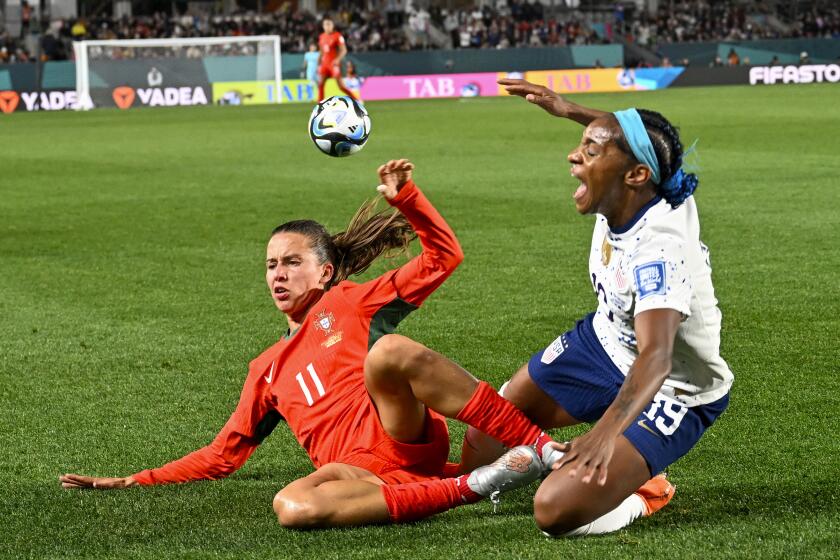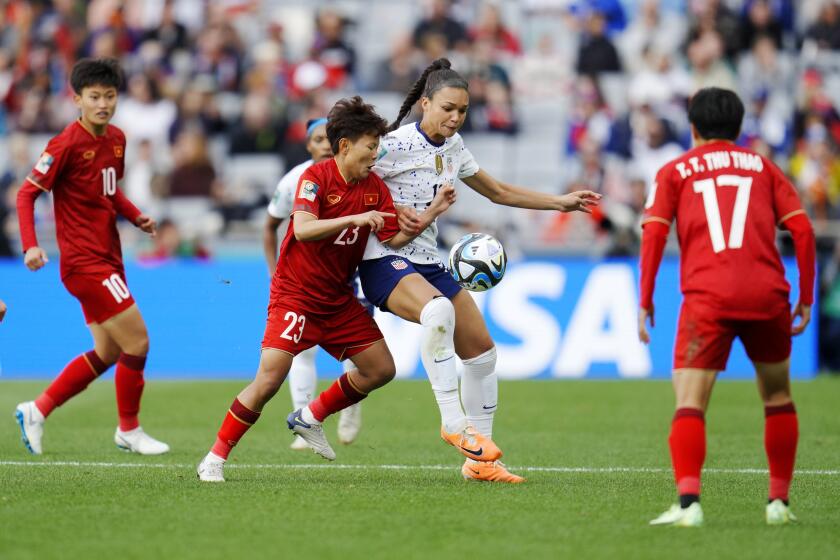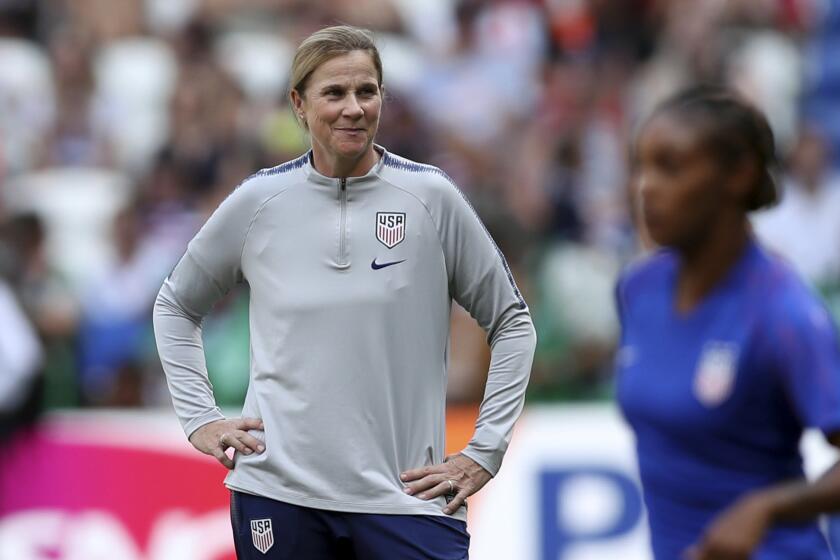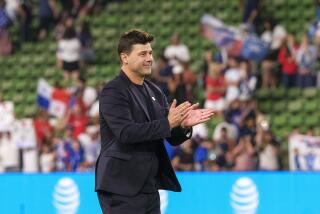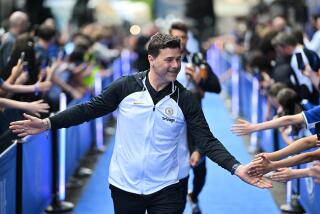Commentary: The U.S. women’s soccer team is struggling at the World Cup. Can it right itself?
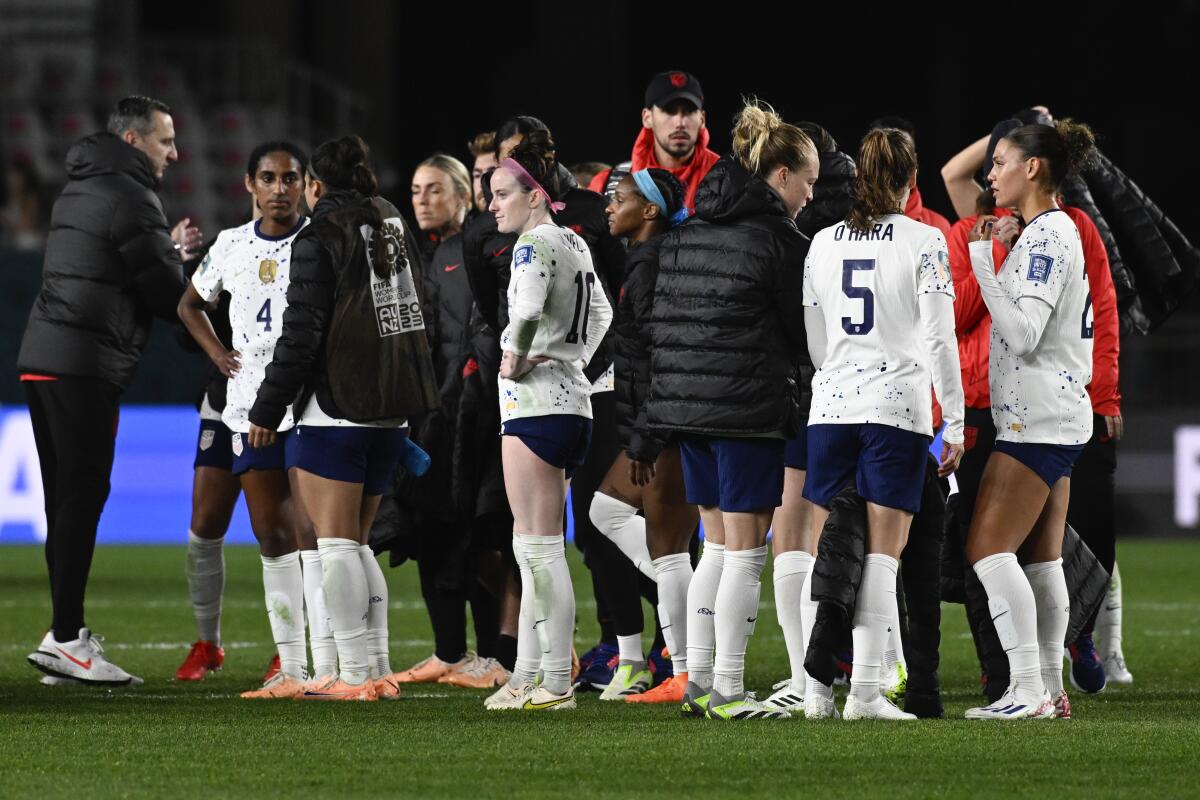
- Share via
AUCKLAND, New Zealand — Playing under a first-time World Cup coach and starting a lineup featuring a number of first-time World Cup players, the U.S. won its opener in unimpressive fashion, then settled for a draw in a game it could have won to escape group play for an uncertain trip through the knockout stages.
Sound familiar? That first happened in 2015, when the springy legs of defender Meghan Klingenberg may have been the only thing that saved the U.S. from a first-round exit. But once the team hit the round of 16, it caught fire, running the table behind six goals from Carli Lloyd to win the first of two consecutive championships.
And Jill Ellis, who coached the U.S. to those World Cup titles, said it could happen again this summer.
“The reality is, yeah, things haven’t fallen into place at this point,” said Ellis, the only coach to win two women’s World Cup titles. “But there’s still the whole tournament to play for. This is certainly a talented roster. And, you know, it’s never a smooth road to the top of the podium.
“If they can weather the storm, there’s always the opportunity to advance to the final.”
The U.S. women’s soccer team struggled to fend off Portugal’s relentless attack during a 0-0 draw and advanced to the knockout round of the World Cup.
As in 2015, however, something has to change. In that tournament, yellow card suspensions to Megan Rapinoe and Lauren Holiday forced Ellis to change her lineup and tactics in the quarterfinals, pushing Lloyd forward into the attack. The approach stuck, with Lloyd scoring five of the next seven U.S. goals, including three in the first 16 minutes of the final.
Five players on that team are on this one, which may explain their apparent lack of concern. Although the U.S. is unbeaten, its one win and five points in group play marked its worst performance in the opening round in women’s World Cup history. It also finished second in the table for just the second time in nine tournaments, but that may be a good omen as well since the first time it happened, in 2011, the U.S. went on to the final.
Alex Morgan, who was on both the 2011 and 2015 teams, doesn’t see any reason why this one can’t do the same thing.
“I know this team and I know what we’re capable of,” she said. “Just because it hasn’t clicked every moment on the field and we’re not putting the goals in the back of the net doesn’t mean these aren’t the right players for the job. The competence is there. Now we just have to prove it.”
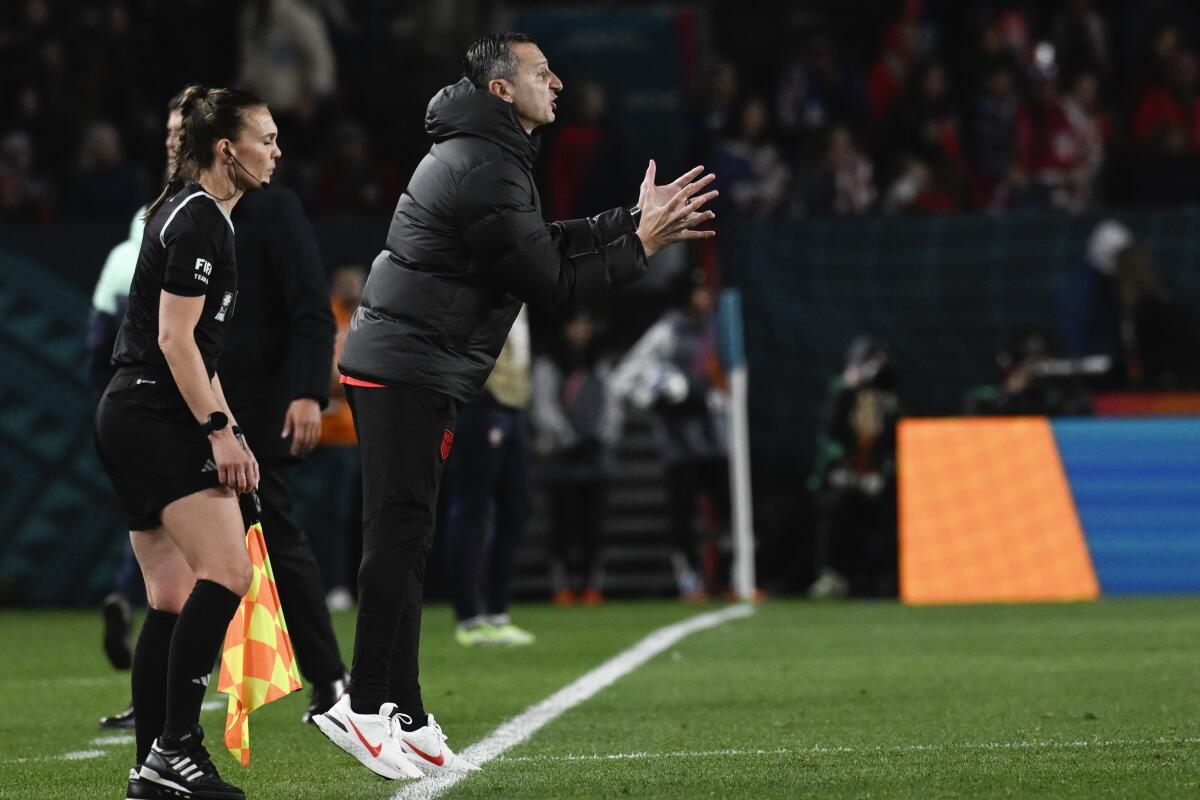
That won’t happen if the team doesn’t do things differently in Sunday’s round-of-16 match with Sweden, a team the U.S. has beaten just once in its last five tries in World Cup and Olympic competition. Yet the roster coach Vlatko Andonovski selected for this tournament is so flawed, so thin and so redundant, the number of changes he can make is limited — especially with Rose Lavelle, his most creative midfielder, suspended for the next match because of yellow card accumulation.
Andonovski has also complained about a lack of on-field chemistry, especially with some of his 14 World Cup debutantes.
“This team is not just young; this team is also a fresh team that hasn’t spent a lot of minutes together,” he said earlier in the tournament.
But he knew the players were unfamiliar with one another when he chose them, so that can’t be used as an excuse. In any case the problem isn’t a lack of star power but, rather, how those stars have been aligned.
“It’s not like we don’t have the pieces,” the coach said. “It’s not like we have not done this before against good opponents. We have to stick to our principles, we have to stick to our game model and we have to stick to our philosophy.”
The U.S. women’s national team was tested during its World Cup match against Vietnam, but coach Vlatko Andonovski and his players aren’t worried.
But what are those principles, what is that game model and what is that philosophy? More than five weeks after the roster came together, players still seem unsure of their roles and the three lines — the defense, the midfield and the attacking three up front — frequently aren’t on the same page. Of greatest concern, though, is the fact the world stage is proving too big for Andonovski, the person tasked with making the changes the U.S. needs to get over the hump.
In its second game here, the U.S. had the Dutch on the ropes late in the game, but the coach froze and kept his substitutes on the bench, settling for a 1-1 draw. In Tuesday’s scoreless draw with Portugal, he made just one change in the first 84 minutes. And after each game, he’s made similar laments about wasted opportunities, poor finishing and the disconnect between the lines.
But he’s been unable to correct any of that.
Following the listless, passionless performance against Portugal, Andonovski was asked directly whether he’s concerned the problems he’s identified keep being repeated.
“No, it does not concern me at all actually,” he said. “I’m very confident with the group that we have. They can execute this. We just have to find those moments, get on the same page and execute them in the next game.”
That sounds more like wishful thinking than a coherent strategy.
“As a coach,” Ellis said, “you’ve always got to be an optimist.”
But you’ve also got to be a realist. And the reality is without fundamental change, this U.S. World Cup team, unlike the one in 2015, will be watching the final on TV.
Jill Ellis will have a rooting interest in the 2023 Women’s World Cup, but her impact on soccer stretches beyond her storied stint as USWNT coach.

